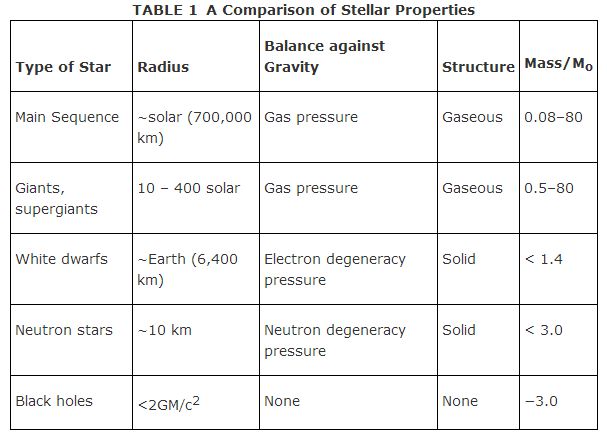Black Holes and Binary X Ray Sources
What happens if star can't get rid of enough mass in a supernova explosion to produce a remnant neutron core below three solar masses (below which only can neutrons produce enough pressure to counteract gravity); or if the collapse of the core is so dramatic as to smash through the neutron pressure barrier? When an object of mass M has radial size less than R = 2GM/c 2 (the Schwartzschild radius; 3 kilometers for a mass of 1 solar mass), then the surface gravitation becomes so intense that not even light may escape; the object disappears from view. Although not visible in any form of electromagnetic radiation, the object's gravitational field would still be felt in the surrounding space. Such a black hole could be detected by its gravitational influence on other objects.
Evidence for such collapsed objects appears to exist in the form of binary x‐ray systems. Here a compact object may accrete material from its companion that is swelling to become a red giant star. As this material falls in toward the compact star, angular momentum conservation produces a rapidly rotating accretion disk near the compact star. The energy released from infall of additional matter and its collision with this accretion disk appears in the form of X‐rays, gamma rays, and other energetic photons. Application of Kepler's Third Law to the observed orbital motion of the visible companion in several X ray sources (for example, Cygnus X‐1) suggests that the masses of the unseen companions are too large to be any kind of known star; thus presumably the unseen stars are black holes.
In summary, objects termed stars may represent a wide variety of physical conditions, as shown in Table 1 and Figure 1:


Figure 1
Summary of stellar evolution.
|
|
|
|
|